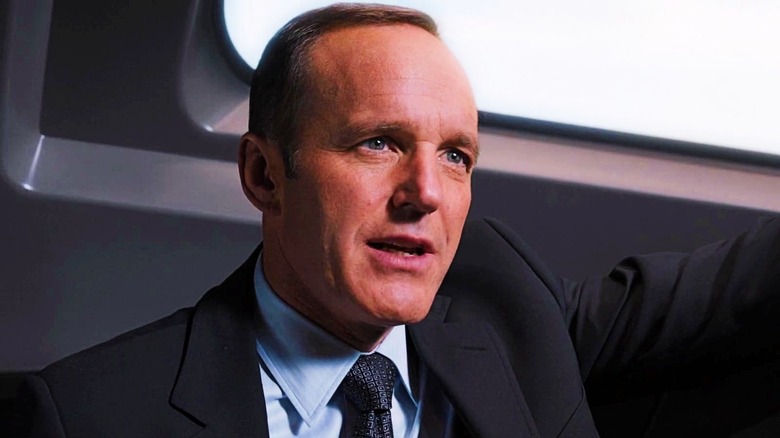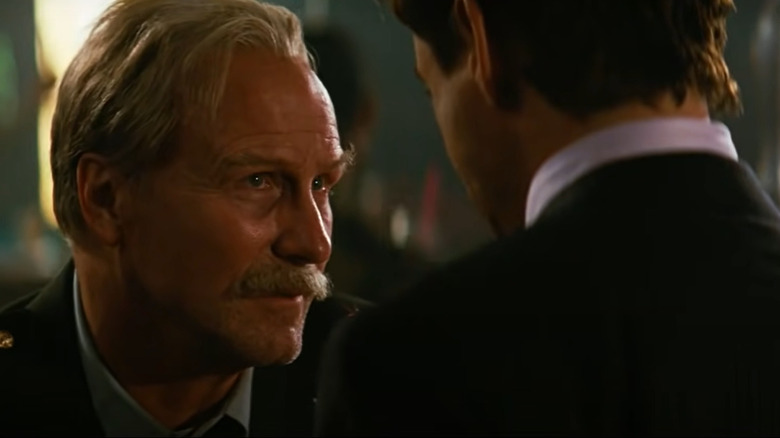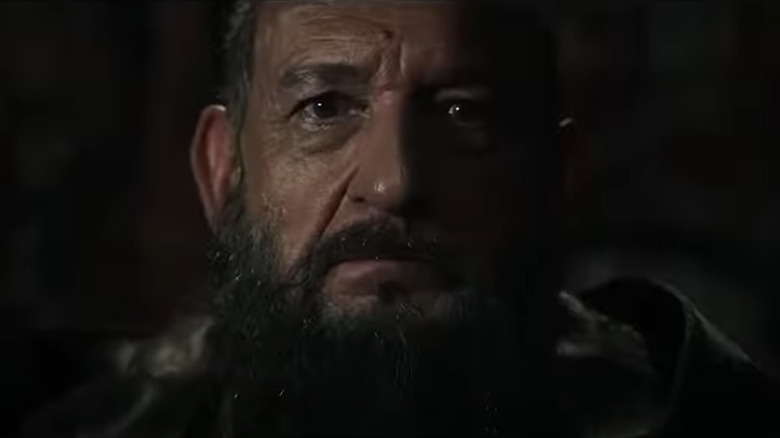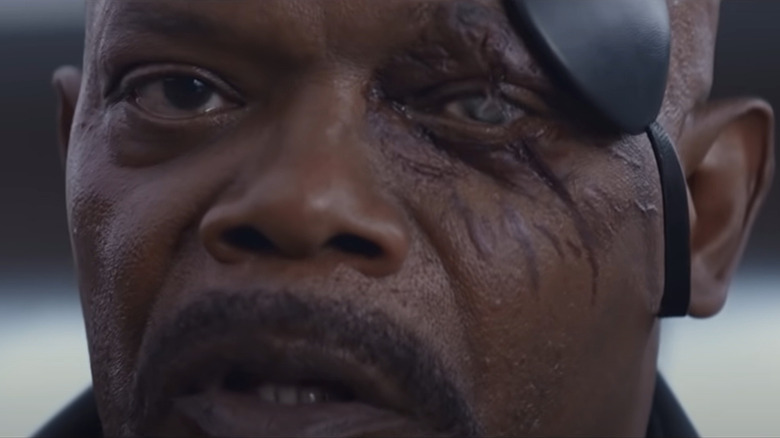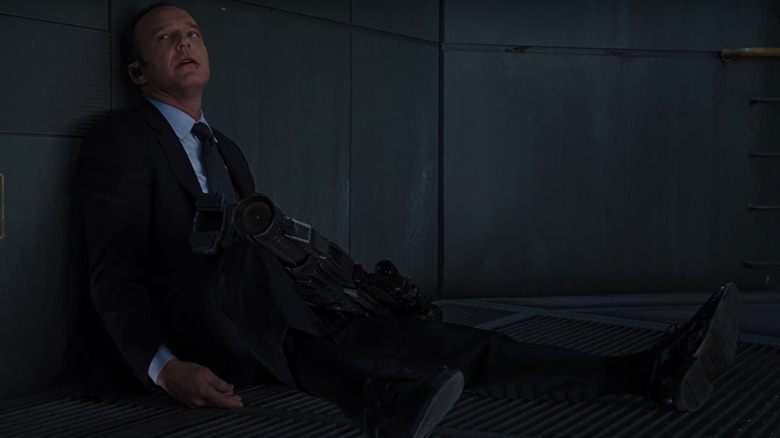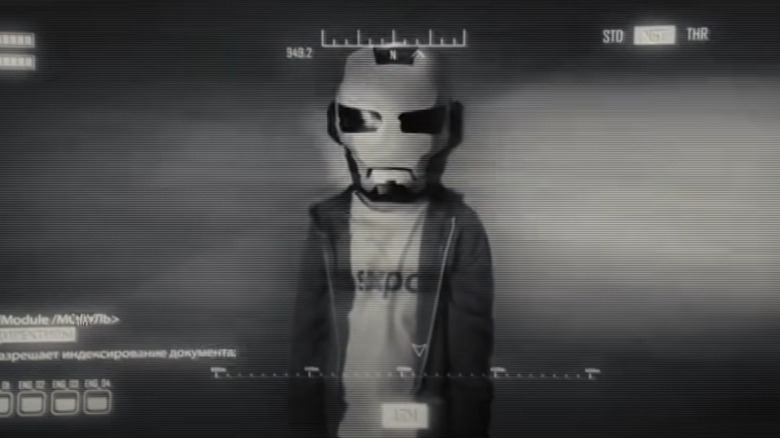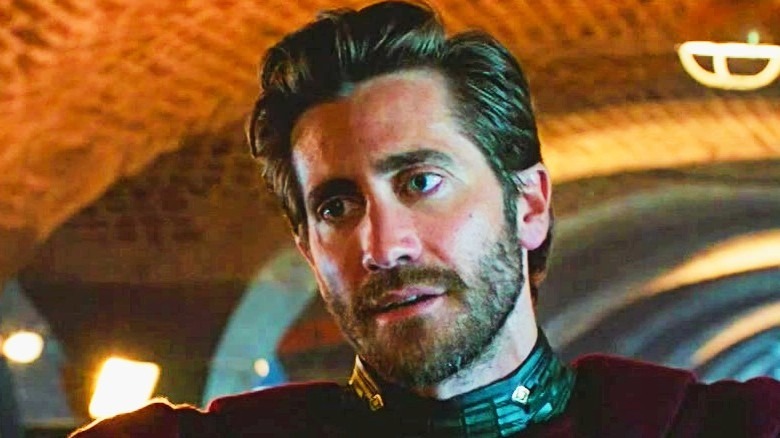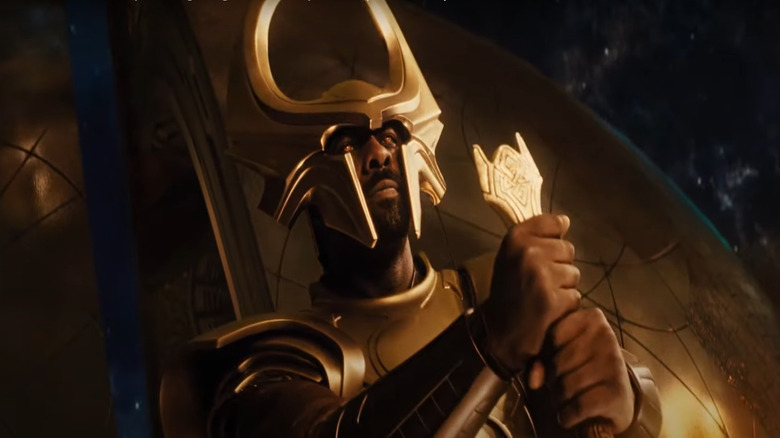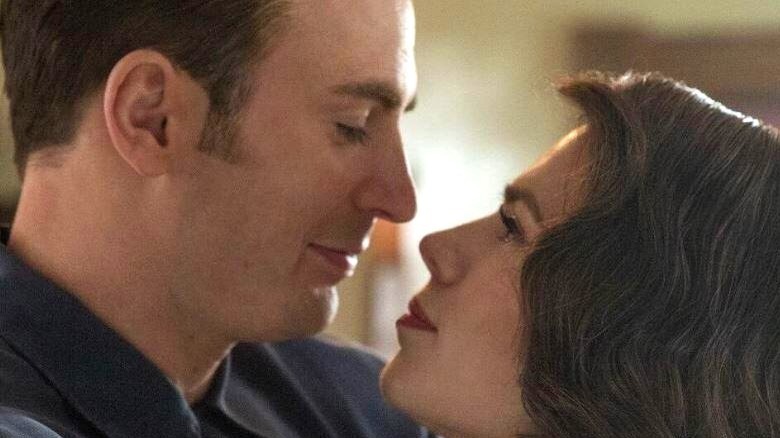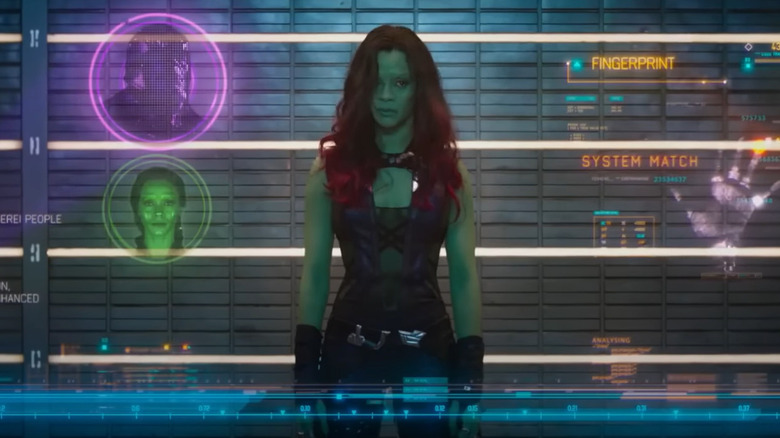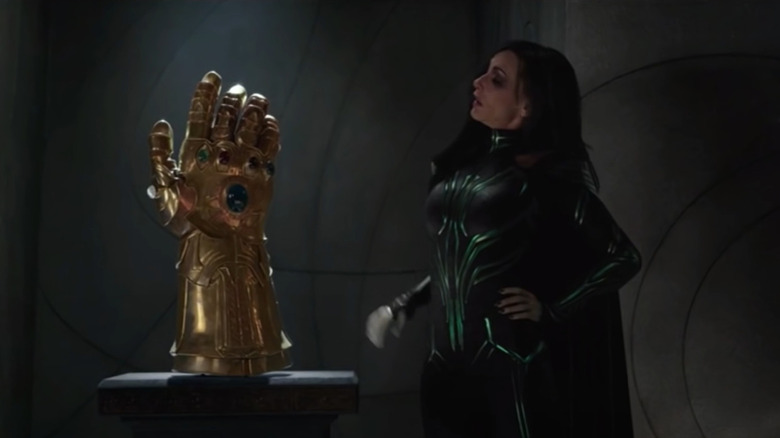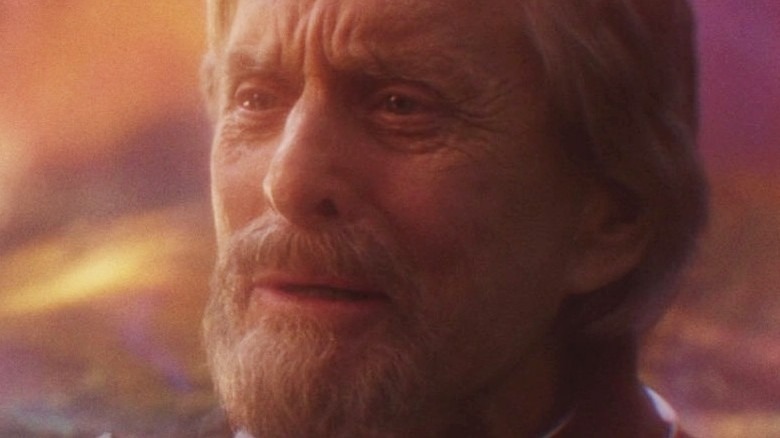Retcons In The MCU That Never Should Have Happened
The Marvel Cinematic Universe is the biggest and most successful franchise in pop culture history. Fans and critics alike have delighted at what Marvel Studios president Kevin Feige has pulled off, turning a popular film series into a sprawling saga spanning the galaxy, the time-space continuum, and now multiple dimensions. While it may be tempting to attribute the MCU's triumph to the novelty of basing a franchise on such an expansive and interconnected universe, that's only part of what keeps audiences coming back for every new film and TV show. Filled with talented actors, engaging stories, humor, and breathtaking fight scenes, nearly every chapter in the MCU has been a crowd-pleaser.
However, as entertaining as the MCU is, it's not without its flaws. Because of the ever-growing nature of the overarching story, there are bound to be plot holes and narrative threads that fall by the wayside. Some of these issues have been fixed by Marvel Studios in the form of retcons (or retroactive continuity, wherein a previous event or storyline is erased to make way for a new one) to correct some inconsistencies. Still, some of these retcons feel forced and have even led to more discrepancies, leading fans to believe they should've been left alone. Let's take a look at the retcons in the MCU that never should have happened.
Wasn't General Thunderbolt Ross supposed to help found the Avengers?
2008's "The Incredible Hulk" is an unusual film in the MCU. Though General Thunderbolt Ross and Emil Blonsky-slash-Abomination returned for later installments, so much of that sophomore MCU film has been forgotten. However, there's an interesting retcon in that film that we want to shine a spotlight on: Ross' involvement with the founding of the Avengers. During the post-credits scene, a drunken and dejected Ross is sitting in a bar pounding shots when Tony Stark arrives with the announcement that he's putting together a team, which piques Ross' interest before cutting to black.
At the time, it was a fun little tease setting up the arrival of Earth's Mightiest Heroes on the big screen just a few years later. Looking back on the scene now, however, it comes off as confusing, leaving us wondering what Marvel Studios was hoping to achieve story-wise. Did Stark go to Ross for details on the Hulk's whereabouts? Was Ross supposed to serve as a liaison between the military, SHIELD, and the Avengers? Was Stark sent there to recruit Ross (who becomes Red Hulk in the comics) himself to join the team? Ross didn't return until "Captain America: Civil War," and by that time he's left the military and is Secretary of State, completely ignoring his early association with the Avengers.
The (too) many faces of the Mandarin
For those not familiar with the comic source material, the Mandarin is one of Iron Man's oldest foes and a truly formidable enemy in the Marvel Comics universe at large. So of course, it was only a matter of time before fans finally got to see the classic villain on the big screen. Instead, though, we got a drunk British guy named Trevor Slattery hired to play the megalomaniacal baddie, with the main villain, Aldrich Killian, claiming that he was the real Mandarin the whole time. Fans weren't too happy about this, so Marvel Studios put out a short one-shot film, "All Hail The King," establishing the actual Mandarin is out there, and he isn't happy with others stealing from his legacy.
While Marvel Studios finally gave us closure on who the real Mandarin is in "Shang-Chi and the Legend of the Ten Rings," by that time the mystique of the villain was so watered down, the persona became a mere afterthought. Xu Wenwu, who actually made a terrific antagonist in "Shang-Chi," reveals that Killian had appropriated his Ten Rings organization and named himself after a traditional chicken dish. It was a funny bit of exposition, but it was an anticlimactic revelation considering how Marvel Studios went so far as to release a short film with an Oscar-winning actor in Ben Kingsley just to tide fans over until a more acceptable rendition of the beloved villain.
Nick Fury's eye lie
Nick Fury's eye patch is one of his trademarks. As the Director of SHIELD, he clearly has a lot of experience protecting the world from a wide range of threats, so it was always assumed that he lost his eye on one of his countless dangerous assignments. This was hinted at during an exchange in "Captain America: The Winter Soldier," wherein Steve Rogers confronts Fury about withholding important information during a recent mission. Fury tells Rogers that he lost his eye the last time he trusted someone, and said no more, making that fateful event all the more ominous. However, the actual story behind the loss of his eye is much more mundane: In "Captain Marvel," it was scratched by Goose, a member of the Flerken race in the guise of a common housecat.
This was a disappointing reveal, not only because of how silly it was, but because it largely contradicted what Fury hinted at during his exchange with Rogers. Sure, that's what he got for trusting an alien in a feline form, but how does that tie into his future decisions to keep his soldiers in the dark about the missions he sends them on? Then again, maybe we can't blame Fury too much for keeping the real story of his eye a secret; he can't be the top guy of an organization called the Strategic Homeland Intervention, Enforcement and Logistics Division while letting it be known that a cat once posed a major threat to him.
Phil Coulson's death
Agent Phil Coulson was a wonderful addition to the MCU. While he wasn't based on any existing comic book character, we didn't care; the way he handled massive threats with bureaucracy and a stern commitment to doing things by the book was an absolute delight. But it wasn't just his wry persona that made him so valuable to the MCU's Phase 1, as he also served as the connective tissue that brought Earth's Mightiest Heroes together. Coulson was killed by Loki in "The Avengers," but was brought back to headline the television show, "Agents of SHIELD," going on numerous secret missions around the world, in space, and across time between the MCU's films. He even appeared in "Captain Marvel," fleshing out some of his long history with SHIELD.
While it was great to spend more time with Coulson, undoing his death posed some problems for the MCU. For example, it completely undermined the role his final sacrifice played in giving the Avengers the motivation they needed to come together. "Agents of SHIELD" did an admirable job giving us a more in-depth look at what makes Coulson such a fascinating character, but it's a bit odd that Nick Fury, under whose orders Coulson was operating, kept his resurrection a secret from everyone else in the MCU, and that Coulson and his team were so stealthy that absolutely no one else found out about their existence.
Peter Parker's surprisingly early appearance in the MCU
"Iron Man 2" sees Tony Stark bring back the Stark Expo his father Howard started decades earlier. Taking place at Flushing Meadows–Corona Park in New York City, the event is set to feature Stark's rival Justin Hammer's new line of drone suits which were, unbeknownst to the rest of the world, designed by Ivan Vanko. The Stark Expo kicks off without a hitch, until Vanko activates the drones, causing havoc and endangering the lives of attendees. Luckily, Iron Man arrives to draw the attention of the drones, but not until he saves a young boy in an Iron Man mask. This was merely a cute moment between the ironclad Avenger and a little fan, but it would be confirmed years later the scene was more significant than we thought.
You see, Tom Holland, who plays the MCU's version of Spider-Man, revealed in the Huffington Post that the young boy was Peter Parker. Holland said, "I can confirm that as of today. I literally had a conversation with Kevin Feige only 20 minutes ago ... I like the idea that Peter Parker has been in the universe since the beginning." While it's fun knowing the connection between Parker and Stark began before they officially met in "Captain America: Civil War," it does feel forced, as it's never mentioned in the films, and thus doesn't have any narrative significance. Even a little joke about it would've been nice.
The MCU's multiverse designation system is confusing
"Spider-Man: Far From Home" sees Peter Parker and his schoolmates head to Europe after the Avengers restored everyone who had disappeared during the Blip. On this trip, Hydro-Man goes on a rampage in the Grand Canal in Venice, Italy. Parker tries to stop him but is saved by Mysterio. Later on, Nick Fury takes Parker to meet Mysterio, also known as Quentin Beck, who reveals that he's from an alternate universe called Earth-833, while Parker's universe is called Earth-616. However, it's later revealed that Beck was a disgruntled former employee of Stark Industries and his tale of the multiverse was made up including, presumably, his story about the different realities' designations.
However, this ended up not being the case as in "Doctor Strange in the Multiverse of Madness," Strange learns that his Earth really is called 616. But how is it possible that Beck guessed his reality's designation correctly as part of his made-up story about the multiverse? Beck's specialties were drones and holographic technology; was he playing around with string theory and alternate universes as part of his research, and discovered that each reality has its own number? We're never given that answer, making this change all the more confusing. It's most likely this was simply an oversight that occurred amid the ever-growing MCU. As the franchise goes deeper into the multiverse, some consistency would go a long way toward keeping audiences from mixing up who's from which dimension.
Sometimes Thor needs the Bifrost to zip across the universe — and sometimes he doesn't
The Bifrost is the primary means of transportation for Asgardians who use it to instantaneously travel across the universe. In the climax of the first "Thor" film, Loki used the Bifrost's intense energy to destroy Jotunheim, forcing Thor to destroy the Rainbow Bridge and allow the Bifrost to fall into the vastness of space. By the time of "Thor: The Dark World," the Bifrost is back in action, allowing Thor to zoom around space to go on his adventures. It seems that it's been irrevocably destroyed at the end of "Thor: Ragnarok," forcing the God of Thunder to rely on other means of transportation.
However, Thor has used other means of transportation before, making the Bifrost's importance a little confusing. After it was destroyed in "Thor," he still travels to Earth in "The Avengers," a move that was explained away with "Dark Energy," which Thor apparently uses at the end of the film to take Loki into custody. We're never told exactly what "Dark Energy" is, making it a sort of deus ex machina. Also, remember how Thor was able to teleport away without calling to Heimdall at the end of "Avengers: Age of Ultron," but when he's about to get attacked by Surtur's forces in Muspelheim in "Thor: Ragnarok," he needed to give Heimdall a head's up for a quick exit? Bifrost needs to be replaced with Uber, stat.
Don't change the past ... unless you want to get married
The end of "Avengers: Infinity War" saw Thanos carry out his ultimate plan of wiping out half of all living beings in the universe. We saw the aftermath of this in "Avengers: Endgame," wherein Earth's survivors are still learning how to move on from the consequences of the Mad Titan's fateful snap. Of course, the Avengers concoct a plan that involves traveling back in time to gather the Infinity Stones from previous time periods, using them to restore all of those lost to Thanos' final act, then going back in time to return the stones. That last part of the plan is extra important; by returning the Infinity Stones to their rightful places in the timeline, it will almost be like nothing changed, therefore preventing the future from getting screwed up.
It may have seemed like a good idea to send Captain America to carry out that part of the mission since he's the most honorable of the Avengers. However, while he was successful in returning the Infinity Stones, he decided to stick around in the past and marry his original love, Peggy Carter. It resulted in a sweet ending to the film, but this major change to the past goes completely unnoticed. I understand that time travel gets really tricky to pull off in movies, and I'm willing to allow for some leaps in logic, but Cap getting hitched should've caused some kind of ripple effect in the future, right?
Gamora's changing backstory
Gamora is one of the most dangerous women in the galaxy, and it's easy to see why. She's the adopted daughter of Thanos who, up until his demise, was feared across the universe, and she was raised by him to be a lethal killing machine. In the first "Guardians of the Galaxy" film, she's arrested by the Nova Corps, and it's revealed that she is the last survivor of the Zehoberei people. This detail makes Gamora far more tragic; her family was wiped out by Thanos, preventing her from growing up in a loving environment and resulting in her being raised by a megalomaniacal Titan. Her outcast persona only makes her all the more worthy to join misfits Star-Lord, Drax, and the other Guardians.
However, this fascinating characterization is undermined when "Avengers: Infinity War" sees Thanos tell Gamora he only killed half of the people on her planet, and that the remaining half is thriving peacefully and with enough resources to go around. Furthermore, Gamora doesn't even seem surprised by this revelation, even seeming to know this fact. This may very well have been yet another overlooked detail, but it does hurt the pathos initially associated with Gamora, making her less complex. Even if the writers had decided to change her backstory, they should have made her act surprised to learn she may have some family on her home planet to show that she still misses them.
Odin's Infinity Gauntlet is a fake
In Phase 1 of the MCU, the films' creators were busy planting the seeds for bigger plots ahead, scattering countless Easter eggs throughout each movie for eager fans to speculate over. One of those little nuggets was the brief appearance of the Infinity Gauntlet in Odin's trophy room, leading fans to wonder when Thanos was going to make his grand entrance in the MCU. However, when Thanos officially declared that he was going to hunt down the Infinity Stones himself at the end of "Avengers: Age of Ultron," it's revealed that he already has the Infinity Gauntlet and this one was on his left hand, like in the comics (the one in Odin's trophy room was made for the right hand).
Obviously, this discrepancy needed to be addressed before Thanos enacted his plan in "Avengers: Infinity War" and "Endgame," so Feige and Co. had Hela reveal that Odin's gauntlet was a fake in "Thor: Ragnarok." An easy enough fix, but it raises an important question: Why was Odin in possession of a fake Infinity Gauntlet? Did he buy it from a shady guy on Craigslist? Did the eBay seller fail to reveal that important detail? Also, from a narrative standpoint, it would've made Thanos an even greater threat to show him or his forces breaking into Asgard, decimating their defenses, and stealing the gauntlet. Instead, we get a throwaway line that was obviously intended to placate nitpicky fans, such as myself. Mission: failed.
So does the Quantum Realm mess with your memory or not?
The climactic battle between Ant-Man and Yellowjacket in 2015's "Ant-Man" saw the pint-sized hero shrink well beyond his suit's capabilities in order to get into his enemy's high-tech armor and disrupt it to save the day. However, Ant-Man's plan resulted in him ending up in the Quantum Realm, where the laws of reality work differently from those in the macro world. With some quick thinking, he's able to increase his size and escape the Quantum Realm. However, he seems to have no memory of what happened there when Hank Pym interrogates him about it to determine if it's possible his wife may still be alive in that pocket universe.
Because the Quantum Realm is such a mysterious place, it makes sense for it to have some crazy effects on those who enter it, such as the neurological impact it had on Ant-Man. However, "Ant-Man and the Wasp" saw Pym head into the Quantum Realm and return with Janet van Dyne without either of them suffering from memory loss. So what's the deal with Ant-Man's hazy memory of his time there? He could've been lying to Pym about his experience, but there's no narrative reason for that. Also, when he got stuck there for five years only to return in "Avengers: Endgame," he seemed to have a pretty solid understanding of what the Quantum Realm is.
